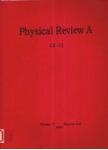版权所有:内蒙古大学图书馆 技术提供:维普资讯• 智图
内蒙古自治区呼和浩特市赛罕区大学西街235号 邮编: 010021

作者机构:Center for Quantum Information and Quantum Control Department of Physics and Department of Electrical and Computer Engineering University of Toronto Toronto Ontario M5S 3G4 Canada
出 版 物:《Physical Review A》 (物理学评论A辑:原子、分子和光学物理学)
年 卷 期:2008年第78卷第4期
页 面:042333-042333页
核心收录:
学科分类:070207[理学-光学] 07[理学] 08[工学] 0803[工学-光学工程] 0702[理学-物理学]
摘 要:Quantum-key-distribution (QKD) systems can send quantum signals over more than 100km standard optical fiber and are widely believed to be secure. Here, we show experimentally a technologically feasible attack—namely, the time-shift attack—against a commercial QKD system. Our result shows that, contrary to popular belief, an eavesdropper, Eve, has a non-negligible probability (∼4%) to break the security of the system. Eve’s success is due to the well-known detection efficiency loophole in the experimental testing of Bell’s inequalities. Therefore, the detection efficiency loophole plays a key role not only in fundamental physics, but also in technological applications such as QKD systems.